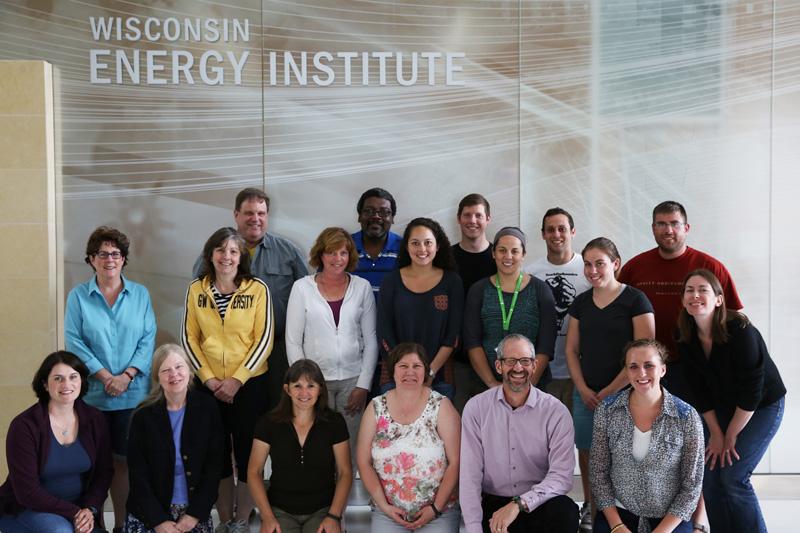
The week of June 16 marked the annual Bioenergy Institute for Educators program at the Wisconsin Energy Institute. Hosted by the Great Lakes Bioenergy Research Center’s (GLBRC) education and outreach staff, the Institute welcomed educators to learn about the latest bioenergy breakthroughs and how to bring contemporary energy content into their classrooms.
“There was an opportunity for educators to interact with the resources at the Center,” explained John Greenler,
education and outreach director of GLBRC. “The best way to do that was to bring them here, to have a crash course in bioenergy content and to hear from those directly involved with research.”
Fifteen educators representing schools from the middle through high school levels braved six days of intense exposure to all things GLBRC. Tours, presentations and activities brought them face-to-face with pioneering research and related educational materials.
Though each educator’s experience with the GLBRC program is unique, most came hoping to discover new ways of encouraging student engagement and understanding around a difficult subject matter.
“[Last year] I didn’t have a nice coherent plan,” said Shelly Rudnick-Peterson, first-time Environmental Science teacher at Menasha High School. Like many of her fellow educators at the Institute, Shelly struggled with conveying to students the connectedness of science topics like photosynthesis, combustion, and climate change.
“My goal this summer [is to] reformat my class,” said Rudnick-Peterson. She applied to the Institute with the directive of doing just that.
Present throughout the week’s activities were the bridging concepts of this year’s theme – “Sustainable Bioenergy Production and Climate Change.” The theme, Greenler explained, puts into a relevant context some of the more challenging science concepts, such as the carbon cycle. By tracing matter and energy through biofuel production and use, students come to understand science as more than just a collection of facts, but an ongoing process of discovery.
With this theme in mind, Institute attendees worked on producing course plans and activities for the upcoming school year. Collaboration with GLBRC scientists and education researchers ensured an interesting and effective investigative science process for students. In fact, many procedures described in the activities are similar to those used by the scientists themselves.
“We need to look carefully at what brings the most engagement from students,” said Greenler. “If we can’t get the students interested, we’re never going to succeed.”
Bioenergy, Greenler continues, is the perfect medium for delivering this kind of engagement. And the teachers agree.
“[My students] are all of driving age,” said Rudnick-Peterson, “they know they need fuel for their car. If you can tie that idea of alternative fuel sources into the science of the environment…it is something applicable to their everyday life.” At the end of the program she presented a series of lessons adapted from GLBRC to help students trace energy and carbon between organisms, human systems and the biosphere.
“With the materials we’re developing, we’re providing students with the tools that allow them to solve their own problems,” said Greenler, “And to answer their own questions.”